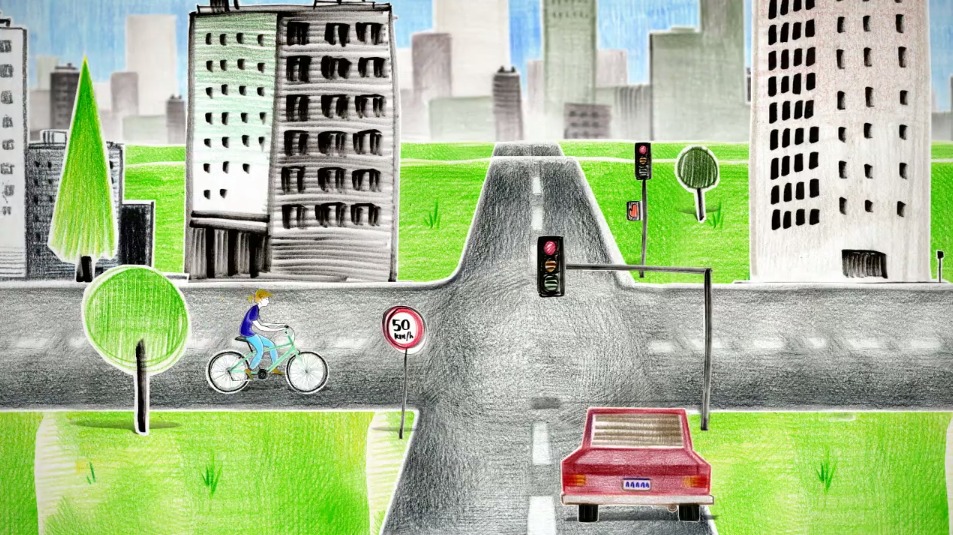Make a pitch to your local community
Write and deliver a short pitch to your local community proposing a helpful project, create a flyer, and practice speaking confidently.



Step-by-step guide to make a pitch to your local community
Types of Communities | Learn about communities for kids and help them learn how to identify them
Step 1
Pick one helpful project idea for your local community and write it in one short sentence.
Step 2
Write three reasons on your paper that explain why this project will help people nearby.
Step 3
Write a short pitch script of about 3 to 4 sentences that explains your idea and asks for support.
Step 4
Draw a simple flyer layout with a big title box a space for a picture and a spot for contact information.
Step 5
Add a catchy title a one-sentence description and a clear call to action to your flyer.
Step 6
Decorate your flyer with colorful drawings or designs using your coloring materials.
Step 7
Write your pitch neatly on an index card in large clear handwriting.
Step 8
Add one or two performance notes on the card like where to pause and when to smile.
Step 9
Practice delivering the pitch out loud in front of a mirror.
Step 10
Use a timer to check your pitch stays under 60 seconds and adjust your words if it is too long.
Step 11
Present your pitch to a family member or friend and ask for one specific suggestion to improve it.
Step 12
Make one change to your flyer or pitch based on the suggestion and tidy your materials in a folder or clipboard.
Step 13
Share your finished flyer and a photo or video of your practiced pitch on DIY.org.
Final steps
You're almost there! Complete all the steps, bring your creation to life, post it, and conquer the challenge!


Help!?
If I don't have index cards, a clipboard, or fancy coloring supplies, what can I use instead?
Use a folded piece of printer paper cut into quarters instead of index cards, a stiff cereal box or hardcover book as a clipboard, and crayons, colored pencils, or printed stickers in place of fancy coloring supplies for the flyer and pitch writing steps.
What should I do if my pitch goes over 60 seconds or I get nervous practicing in front of the mirror?
Time each run with a phone timer and tighten the 3–4 sentence pitch by cutting less important details, and if you get nervous, record a short video of your practice or practice with a family member after adding the performance notes to the index card.
How can I adapt this activity for younger kids or older students?
For younger children, have an adult help write the one-sentence project and the three reasons while the child focuses on drawing the flyer and practicing a very short pitch, and for older students, expand the script into a 60-second persuasive speech, add local facts to the three reasons, and create a polished flyer to share on DIY.org or local community pages.
How can we make the flyer and pitch more powerful or personal after finishing the basic steps?
Add a clear photo or a QR code linking to a short video of your practiced pitch, include a specific contact method in the flyer contact spot, and update the pitch or flyer based on the suggestion you received before sharing on DIY.org to make it more persuasive and professional.
Watch videos on how to make a pitch to your local community
Types of Communities for Kids | Urban, Suburban and Rural Communities | Social Studies for Kids
Facts about community engagement and public speaking
🎤 About 75% of people feel nervous about public speaking (it's called glossophobia) — most famous speakers started nervous too!
💡 An elevator pitch is usually 30–60 seconds long — short, clear, and memorable wins attention fast!
🤝 Community service projects not only help others but also build friendships and make neighborhoods stronger.
📝 Pamphlets and flyers have been used for centuries to spread big ideas quickly — they helped shape movements like the Reformation and political campaigns.
🗣️ Practicing your pitch out loud several times boosts confidence — many pros rehearse until it feels natural.
How do I guide my child to write and deliver a short pitch to our local community?
What materials do we need to create a community pitch and flyer?
What ages is this community pitch activity suitable for?
What are the benefits and safety tips for having a child pitch to the local community?


One subscription, many ways to play and learn.
Only $6.99 after trial. No credit card required



